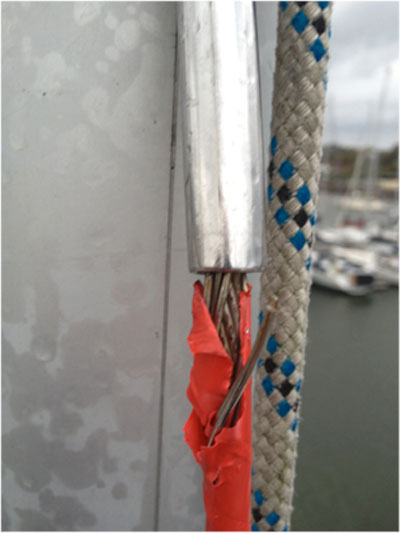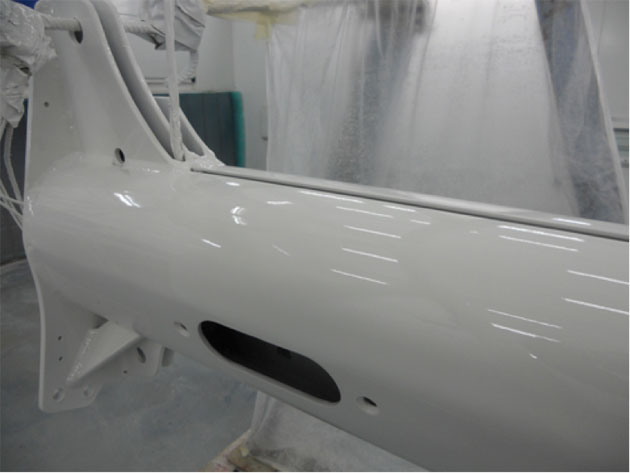How do I know if my rig needs a service?
There are no set service intervals. It is really more about time scales and usage. If you have sailed for years, or thousands of miles with no rig maintenance, then it is most definitely time.
Many older rigs might look fine, but there may be less obvious signs that signify it is time for a full service. A routine visual rig inspection should identify any areas which need further attention.
Things that you can look for out for include but should not be limited to the following:
- Corrosion in the aluminum under stainless fittings
- In wooden masts look for damage to the paint or varnish, blackened areas of wood etc.
- Rusty stains from fittings or rigging terminals
- Any signs of damage or stranding in rigging wires
- Worn or seized sheaves
At Berthon we have a dedicated on-site rigging team that undertake our 150 point rig inspection covering every inch of your mast, boom, spreaders, standing and running rigging. Your rigger will advise whether these are urgent or can be left until the boat is out of commission.
Damaged forestay wire – This was replaced at Berthon
What is the most common part that needs replacing or repairing?
The standing rigging has a finite life span which depends on usage but can also be determined by age. Insurance companies often require a thorough survey of standing rigging at around 10 years and our experienced riggers do this by using specialist NDT equipment (non-destructive testing) with the mast in situ. Obviously such testing is easier when the mast is down at which point we advise that the spreaders and winches are removed to check for rot/corrosion or cracks at the relevant stress points. We would always recommend a thorough mast survey when planning blue water cruising.
Rigging Services – http://www.berthon.co.uk/shipyard/rigging-services/
How can I check the chainplates are in good condition?
It depends on the way the chain plates are made and fitted, but a visual inspection will generally reveal any issues. If the chain plate is removed from the deck or hull they can be checked by dye testing or ultra sound. Again, pretty essential is you wish to take a belt and braces approach prior to a global cruise.
Do spar manufacturers recommend painting spars or leaving them bare?
The options for aluminum spars are anodizing or painting, both of which have benefits. Anodizing is more durable whereas paint is more aesthetic but in time will develop cosmetic problems.
Wooden or carbon spars must be properly protected with a suitable paint or varnish / epoxy system.
Paint Spraying http://www.berthon.co.uk/shipyard/yacht-paint-spraying/
What is the most common cause of a dismasting?
It is unusual for the mast tube to fail without some trigger, which will generally be either the failure of a swage terminal or rod head or often a spreader root.
Is servicing time a good time to upgrade wiring in mast or is it best left untouched if it works?
If mast wiring is in good condition and working, there should be no need to change it. However, it is a lot easier to do with the mast on the ground, so if in doubt, replace it.
Mast wire cluster at the base of the mast.
I bumped my carbon-fibre bowsprit – how do I know if it is still structurally strong? Can I test it (non-destructively!)?
If there are visible signs of damage i.e. broken strands or de-lamination, then its strength could well be seriously compromised. If there are no signs of damage, then hammer testing by an experienced person or an ultra sound inspection would be advisable.
For further information on Mast Inspections and Rig servicing at Berthon and to continue reading this article – http://www.berthon.co.uk/shipyard/rigging-services/rig-service-yw/#mast
For further detailed information on all aspects of rig servicing call Berthon Rigging Manager Robin Milledge 01590 673312
Rigging for Bluewater Yachting – Blog Article by Robin Milledge for the World Cruising Club.









